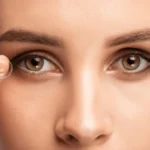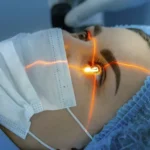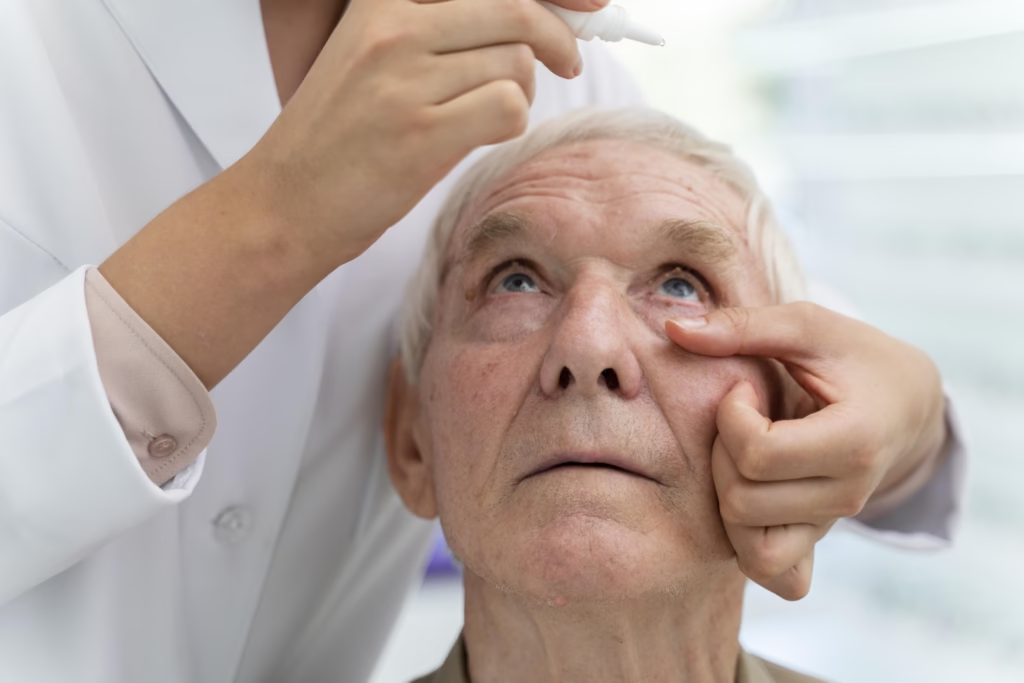Glaucoma is one of the leading causes of irreversible blindness worldwide. Often called the silent thief of sight, it damages the optic nerve the vital connection between the eye and the brain usually due to increased pressure inside the eye. Because vision loss from glaucoma is permanent, understanding its types, symptoms and treatments is essential for early detection and management.
Many people assume glaucoma is a single disease but in reality, it refers to a group of eye disorders that affect the optic nerve in different ways. Each type of glaucoma has its own causes, symptoms and treatment approach. Recognizing the differences can help patients and doctors work together to protect vision effectively.
Let us explore the major types of glaucoma you should know about and understand how each can impact your eye health.
What is Glaucoma? And Types of Glaucoma
Glaucoma is a condition where the optic nerve is gradually damaged, most often because of increased intraocular pressure (IOP) the fluid pressure inside the eye. However, not all types of glaucoma are linked to high pressure and some occur even when eye pressure is normal.
The optic nerve is responsible for transmitting visual information from your eyes to your brain. When it becomes damaged, blind spots start to appear in your field of vision. Over time, if left untreated, glaucoma can cause permanent vision loss or complete blindness.
While anyone can develop glaucoma, it is more common in older adults and those with a family history of the disease. Regular eye check-ups play a vital role in catching the condition before it causes major harm.

-
Open-Angle Glaucoma
Open-angle glaucoma also known as primary open-angle glaucoma is the most common types of Glaucoma, affecting almost 90% of all glaucoma patients. It develops gradually and often without any noticeable symptoms in the early stages.
In a healthy eye, fluid called aqueous humore flows out through a drainage channel known as the trabecular meshwork. In open-angle glaucoma, this drainage becomes partially blocked over time, even though the drainage angle between the iris and cornea remains open. This slow blockage causes pressure to build up, which eventually damages the optic nerve.
Symptoms
The condition is painless and progresses silently. You might not notice any vision changes until significant damage has occurred. The earliest sign is usually the loss of peripheral (side) vision which slowly narrows the field of sight.
Treatment
Open-angle glaucoma can be controlled with
- Prescription eye drops to reduce eye pressure
- Laser trabeculoplasty to improve fluid drainage
- Surgical treatment if the condition does not respond to medications
Since the disease advances silently, routine eye exams are the best way to detect it early and prevent vision loss.
-
Acute Angle-Closure Glaucoma
In the types of Glaucoma open-angle glaucoma progresses slowly, acute angle-closure glaucoma (also called closed-angle glaucoma) develops suddenly and is considered a medical emergency.
This happens when the iris (coloured part of the eye) is pushed or pulled forward, blocking the drainage angle and preventing fluid from escaping. The sudden rise in intraocular pressure can cause immediate and severe symptoms.
Symptoms
- Intense eye pain
- Sudden blurry vision
- Halos or coloured rings around lights
- Headache, nausea and vomiting
- Eye redness and swelling
If not treated immediately, acute angle-closure glaucoma can lead to permanent blindness within hours or days.
Treatment
Doctors first work to quickly reduce the pressure with medication. After stabilizing the eye, a laser procedure called peripheral iridotomy is usually performed. This creates a small hole in the iris to allow fluid to flow freely again.
People who experience an attack in one eye often undergo preventive treatment in the other eye since both are at risk.
-
Congenital Glaucoma
Congenital glaucoma also known as pediatric glaucoma occurs in infants and young children. It is a rare condition but extremely serious because it can cause lifelong vision problems if not treated early.
This types of glaucoma results from abnormal development of the eye’s drainage system before birth, preventing fluid from flowing out properly and increasing pressure inside the eye.
Symptoms
Parents or caregivers may notice signs such as
- Cloudy or hazy eyes
- Excessive tearing
- Light sensitivity (photophobia)
- Enlarged eyes or frequent eye rubbing
Treatment
Surgery is often the most effective treatment for congenital glaucoma as eye drops and medications typically provide only temporary relief. The goal is to create a new drainage pathway to normalize eye pressure and protect the optic nerve.
With early diagnosis and surgical intervention, many children can maintain useful vision and lead normal lives.
-
Secondary Glaucoma
Secondary glaucoma develops as a complication of another eye condition or external factor. It can occur after eye injury, inflammation, surgery or prolonged use of corticosteroid medications.
Common Causes
- Eye trauma (injury or surgery)
- Uveitis (inflammation inside the eye)
- Diabetic eye disease
- Cataract complications
- Steroid-induced pressure rise
Because the cause varies, symptoms and treatment approaches can differ widely.
Treatment
The first step is to treat the underlying cause of the problem. Eye drops, laser therapy or surgery might be used to reduce eye pressure and control damage to the optic nerve.
Secondary glaucoma is often more difficult to manage than primary types, so consistent follow-ups with an eye specialist are crucial.
-
Normal Tension Glaucoma
One of the most puzzling forms of glaucoma is normal tension glaucoma (NTG), in which optic nerve damage occurs despite normal eye pressure levels.
Doctors believe this type is related to poor blood flow to the optic nerve or increased sensitivity of the nerve to normal pressure. People with low blood pressure or circulatory problems are at higher risk.
Symptoms
- Gradual loss of vision, especially in peripheral areas
- Often no pain or visible eye changes
- Vision loss can progress even with normal test results
Treatment
The main approach is to lower eye pressure even further through eye drops, laser procedures or surgery. Additionally, lifestyle changes like improving blood circulation, controlling blood pressure and reducing stress may help slow progression.
Since normal tension glaucoma can easily go unnoticed, regular visual field tests and optic nerve imaging are vital for at-risk patients.
-
Neovascular Glaucoma
Neovascular glaucoma is a severe and difficult-to-treat types of glaucoma that develops when abnormal blood vessels grow on the iris and over the eye’s drainage system. These new vessels block the outflow of fluid, leading to dangerously high-pressure levels.
Causes
This type is usually linked to other eye or systemic diseases such as
- Diabetic retinopathy
- Retinal vein occlusion
- Ischemic eye disease
Symptoms
- Painful red eye
- Sudden decrease in vision
- Cloudy cornea
- High eye pressure
Treatment
Managing neovascular glaucoma often requires a combination of
- Laser photocoagulation to destroy abnormal vessels
- Anti-VEGF injections to stop new vessel growth
- Medication or surgery to reduce pressure
Treating the root cause such as diabetes or retinal disease, is essential to prevent further damage.
-
Exfoliation Glaucoma
Exfoliation glaucoma also called pseudoexfoliation glaucoma is a type of secondary open-angle glaucoma that develops due to pseudoexfoliation syndrome (PXF). In this condition, tiny flaky deposits form on the lens and drainage structures inside the eye.
Over time, these deposits block fluid outflow and increase pressure, causing optic nerve damage similar to open-angle glaucoma.
Symptoms
The early stages may not cause any noticeable symptoms but as the disease progresses, patients experience
- Gradual vision loss
- Increased sensitivity to light
- Trouble with contrast or glare
Treatment
Treatment methods are similar to open-angle glaucoma
- Eye drops to lower intraocular pressure
- Laser trabeculoplasty to improve drainage
- Surgery if pressure remains uncontrolled
Exfoliation glaucoma can progress faster than typical types of glaucoma, so early detection and regular monitoring are crucial.
Why Early Detection Matters
One of the biggest challenges with glaucoma is that it rarely causes symptoms in the early stages. Most people do not realize they have it until significant vision loss has already occurred. Unfortunately, the damage caused by glaucoma cannot be reversed but timely diagnosis can stop or slow its progression.
Comprehensive eye exams that include optic nerve evaluation, visual field testing and eye pressure measurement are the best ways to detect glaucoma early.
If you have risk factors like a family history of glaucoma, diabetes, high blood pressure or are over 40 years old, you should schedule regular eye checkups.
Frequently Asked Questions:
- What are the main types of glaucoma?
The major types include open-angle glaucoma, acute angle-closure glaucoma, congenital glaucoma, secondary glaucoma, normal tension glaucoma, neovascular glaucoma and exfoliation glaucoma. - Which is the most common types of Glaucoma?
Open-angle glaucoma is the most common and usually develops slowly without symptoms. - Is glaucoma hereditary?
Yes. People with a family history of glaucoma have a higher risk of developing the condition. - Can glaucoma be cured?
No, glaucoma cannot be cured but it can be controlled with early diagnosis and proper treatment. - What is the difference between open-angle and angle-closure glaucoma?
Open-angle glaucoma develops gradually with open drainage channels, while angle-closure occurs suddenly when drainage becomes blocked. - Can children have glaucoma?
Yes. Congenital glaucoma affects infants and young children due to defects in the eye’s drainage system. - How is glaucoma diagnosed?
Through comprehensive eye exams, including eye pressure measurement, optic nerve imaging and visual field testing. - Can glaucoma cause blindness?
If untreated, glaucoma can cause irreversible blindness but early treatment can preserve most or all of your vision. - What lifestyle changes can help with glaucoma?
Regular exercise, a balanced diet, avoiding smoking and managing blood pressure and diabetes can all support eye health. - How often should I get my eyes checked?
Adults over 40 should have an eye exam every 1 to 2 years. Those with risk factors may need more frequent screenings.
Conclusion:
Glaucoma is not just one disease it is a collection of eye conditions that can quietly steal your sight. From the common open-angle glaucoma to the sudden acute angle-closure glaucoma and rarer forms like congenital, secondary, normal tension, neovascular and exfoliation glaucoma, each requires careful attention and timely care.
The best way to protect your vision is through regular eye checkups, especially if you have risk factors such as age, family history, diabetes or high eye pressure. Remember, glaucoma-related vision loss cannot be reversed but with early detection and consistent treatment, you can preserve your sight for life.














